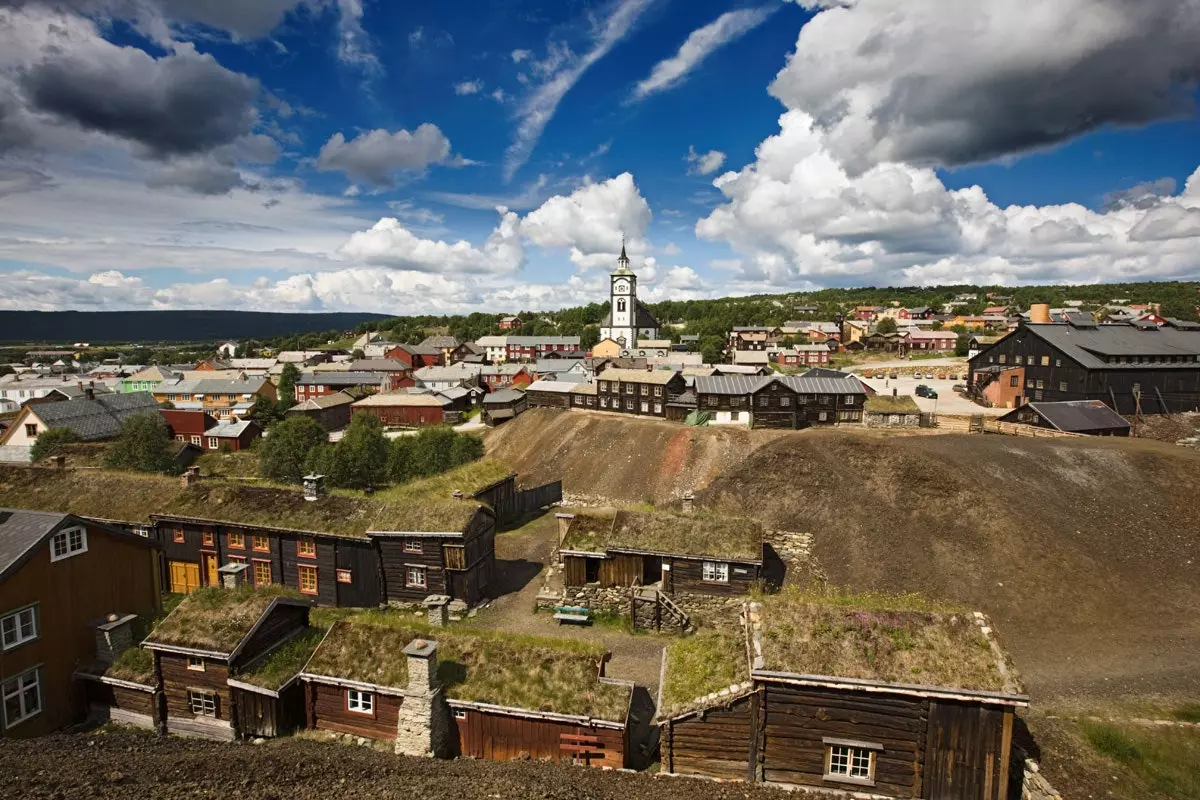
Røros was wild and untamed
The 5,500 inhabitants of this mountain village, situated in a secluded region on a sloping plateau 628 meters above sea level, suffer from a harsh climate . In 2010, they saw the thermometer freeze at -42° (in 1914 it dropped to -50.4°). Needless to say what clothing to wear if you travel to Røros. In 1980, it (the town and a series of cultural, industrial and rural landscapes, called the Circumference) was included in the UNESCO World Heritage list.
After the reconstruction it underwent after its destruction by the Swedish army in 1679, Røros retains 2,000 wooden houses . The facades boast tarred trunks that shine and make it adopt that welcoming medieval city look. As long as they are not buried in a thick layer of snow. So don't be squeamish, grab the shovel right next to the dig door and remove snow. Welcome to another day at the office in Røros.
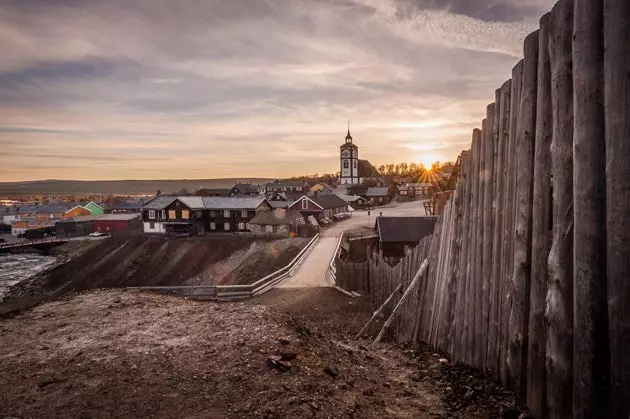
The town was built around the mine
Long before 1644, the date on which they began to exploit in seams such as those of Olavsgruva and Storwartz of that reddish-brown metal, the native Sami and a few hunters were already prowling around those parts . Marianne, a big woman wrapped in a majestic wolf skin coat, which she justifies by saying that "she is over 100 years old, but for the record that I am against the death of animals for making clothes", seems to be the best cicerone to show the town and tell stories of that Røros that nobody wanted to know anything about. And she does it while her husband steers the horse-drawn sleigh that glides down the whitewashed streets.
She says that before the sled was used to transport food as it was a very practical means. From 1950 it began to be used to walk the first tourists I know they dared to come (with what they earn they feed the horses). Good people this couple of big men. Less romantic and warm is the experience of contemplate the mystical and intense light that the blue hour gives off on a sled pulled by a string of beautiful Husky dogs (MAD Husky Tours Dog Sledding). The intense smell of the dogs and the cold that seeps to the marrow may weaken your spirits. It is the price to see the twilight slipping several centimeters above the snow.
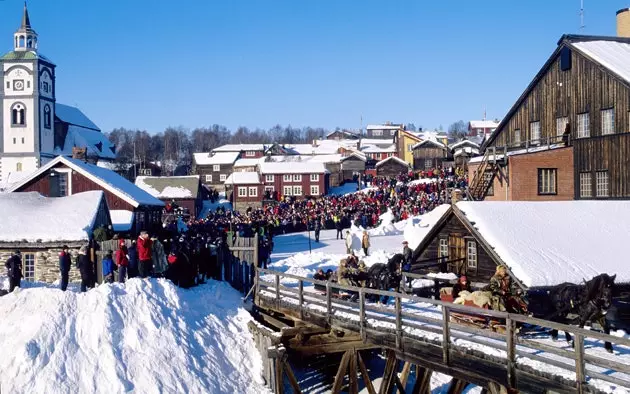
From transporting food to transporting tourists
Around and according to the needs of the operating company, Røros was founded. A town that developed through the intertwined work of the mining and agricultural community , perfectly conceived and directed by the maximum person in charge of the operation. The objective was to create a network of food and textile supplies, among others, to supply and cover the requirements of the mining population. Like the pottery workshop ** Røros Potteriet **, owned by Robin Schellenberg or the farm ** Røros rein **, a little further from the center.
In her, the visitor will discover some of the customs of the Sami and their link with the reindeer , under cover and warm inside a traditional gåetie (hut) . If you are scrupulous, then, we forget to try the dried reindeer heart, among other parts of this animal that they take advantage of everything to feed, dress and provide themselves with.
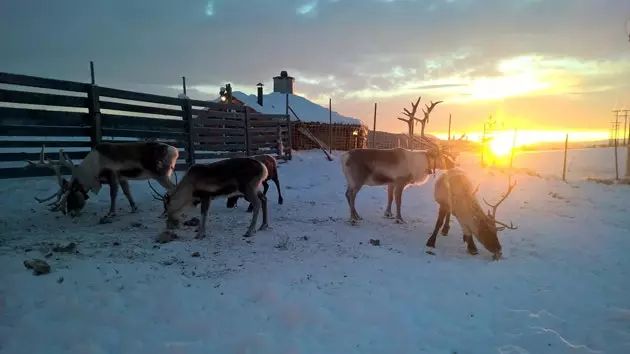
Everything revolves around the reindeer in this farm
Sliding on a 'spark' (sled that works like a scooter, very popular among the locals) through the steep and parallel streets of Bergmannsgata (the main road) and Kjerkgata (in which the church is located) the traveler glimpses the effort and the interest of the operating company in having the population grouped for better control and management . In the meantime, be careful with the 'spark' and don't over-brake, it's a treacherous contraption with outsiders.
at the door of Berkel & Bar (part of the Vertshuset Hotel) can park the spark, just as a gold prospector would tether his horse before entering the Gem Saloon in Deadwood, South Dakota. This is a perfect place to try the specialties of the area: game meat, salmon, cod, herring e, natural of its clear and crystalline waters, dairy products, vegetables and vegetables , from the native orchard. Also, be sure to have a beer brewed by the owner of all this racket, the enthusiastic Stein Kverneng. Another interesting option for a good agape and rest is Solheim Pensjonat , the hotel decorated like any grandmother's house and run by the Swedish Johanna Henrikson.
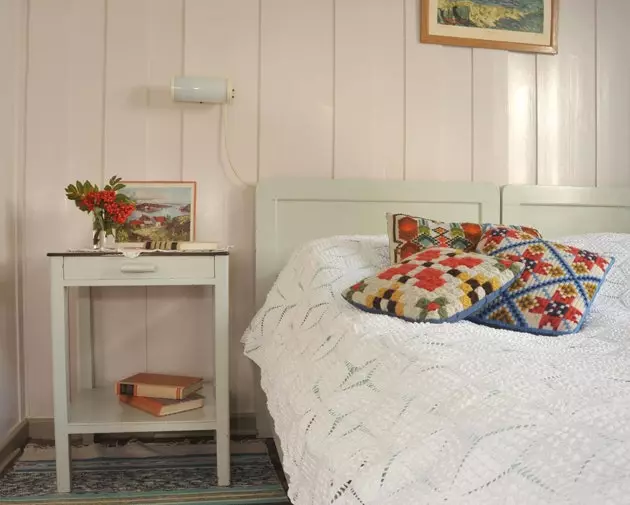
It has the same charm as a grandparent's house
It is true that Røros lived for more than three centuries (from the 17th to 1977) by and for mining, but indirectly it gave the first steps that today make it the local food capital of Norway. From the beginning, to those men who descended into the bowels of the earth, the exploiting company provided them with land, between the two main streets of the town, to build a house and maintain a modest farm. In Bergmannsgata the high officials of the exploitation settled, the same types who bragged about their trips to Rome and Athens. Upon their return they did not hesitate to copy and introduce architectural elements of that art in their homes. The result is a very bizarre landscape in which it prevailed to appear , only the facade, the rear and the sides were painted in color, for what?, they would think.
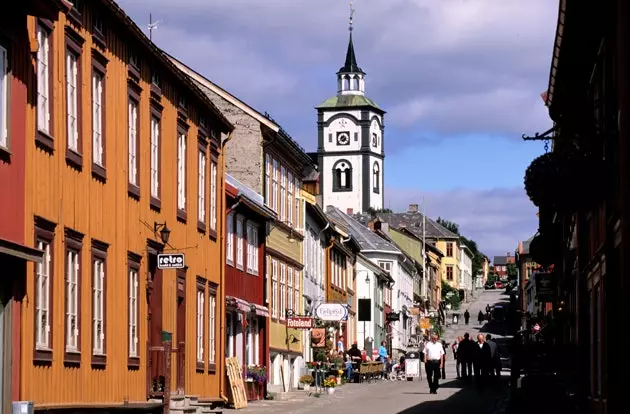
Life runs through the center of town
The church was built on Kjerkgata street, "the pride of the mining town" , coinciding with the golden age of copper extraction (1784) . It was erected in honor of God and to decorate Røros. Its tower rises above the colored wooden houses and boasts a logo that combines tools with a fertility symbol. Inside (with capacity for 1,600 people), on days of worship (compulsory attendance and lasting four hours), you could see the literal supremacy exercised by the top leader of the farm over the rest of the community: his seat it was three inches above the parish priest's own pulpit. The poorest inhabitants entered the temple through a side door and were placed on the upper floor, so as not to be seen by the wealthy people. This is how they spent them in Røros, a place where there was also time to rest: Thursdays in winter and Fridays in summer.
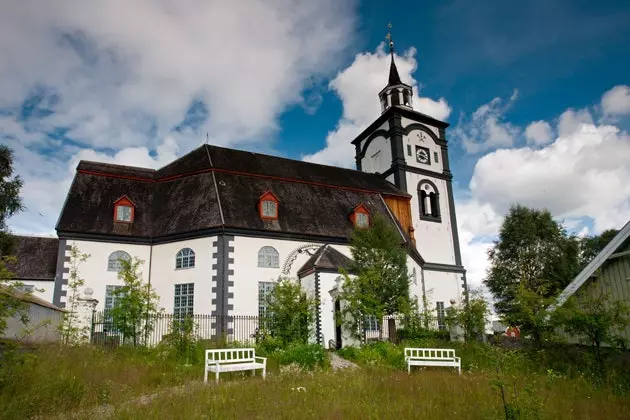
"The Pride of the Mining Town"
